The AACP Board hard at work- October 2022
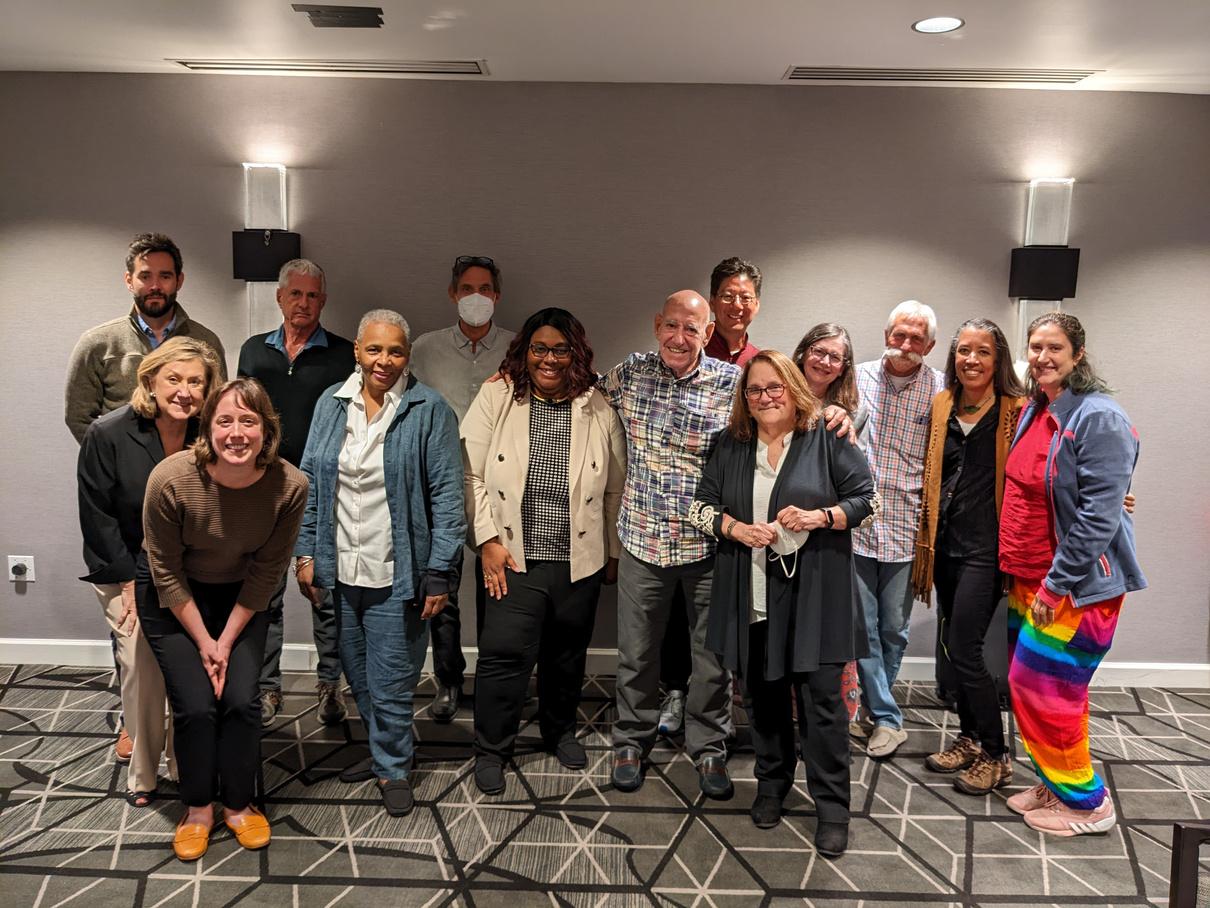
Volume 39, Number 1
In this issue: President’scolumn
LOCUS&theCertificationExam
CommunityMentalHealthJournal
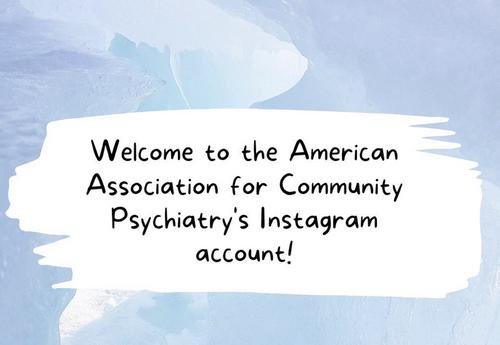
CommunityPerspectives: JonathanStone
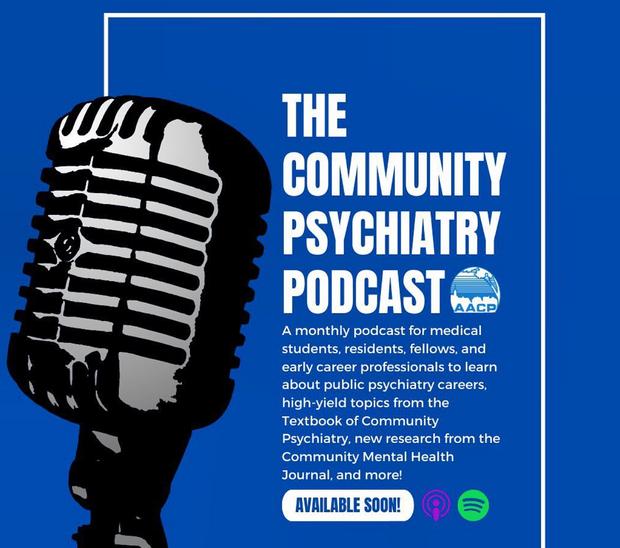
KellyGreeson
NicolasFletcher
AmyGallop
SamanthaHayes
ChristineDeCaire
MichaelFlaum
Editor'sclosingremarks
ThankyoutoourPartner-PRMS


A publication of the American Association for Community Psychiatry
Spring 2023
Community Psychiatrist
AACPPodcast&InstagramPage TextbookofCommunityPsychiatry UpdatesontheKeystoneProducts:
@aacp123
www.communitypsychiatry.org @aacp_communitypsych
Spring 2023
www.communitypsychiatry.org

mmunity Psychiatrist
Volume 39, Number 1
President's Column
Altha J. Stewart, MD President, American Association for Community Psychiatry

As I write this column, I’m looking back at the past six months with an enormous sense of pride for the AACP’s accomplishments during that time. In the last six months we have navigated the re-formatted 2022 MHSC (aka IPS) meeting, gathered the membership for AACP updates and social networking, and started 2023 with a series of successful activities by our 3 active working groups, formerly called “planks”. And I could not be prouder to celebrate with all of you the publication of the Textbook of Community Psychiatry (links to purchase: Springer or Amazon) which I expect will become the new standard for training programs, clinical practice, and policy development for the field of community psychiatry heading into the future.
The AACP Policy & Advocacy forums which started as my opportunity to hear what members saw as important topics for us to tackle have become a well-attended, action oriented component of our member engagement efforts and will continue moving forward. The enthusiastic members of the communications and collaborations team expanded their work to include a podcast - The Community Psychiatry Podcast (available on Spotify and ApplePodcasts). We have also started a new Instagram account which you can find at https://www.instagram.com/aacp_communitypsych/. Please follow, review, and share!
Big shout outs to Hannah Lynch, Jean Wu, Angela Liu, Robert Gadomski, Jessica Isom and Zoe Wyse for the work you’ve done to introduce AACP to a broader community as part of your work with the communications and collaborations group. Please reach out to Angela Liu if you have ideas for topics or speakers for the podcast at angelaliu515@gmail.com You can also find us on Twitter (@AACP123). Thank you also to Mira Bodic as she continues to do a terrific job as newsletter editor and webmaster, as well as working now on updating our website. Check it regularly for news about community psychiatry updates and AACP activities and volunteer opportunities.
A publication of the American Association for Community Psychiatry
Spring 2023
mmunity Psychiatrist

President's Column- continued
And finally, many thanks to the products and services plank for your continued efforts to support innovations for quality improvement in our field through LOCUS and the SMART tool work, with more and more organizations requesting use of both. Dr. Rachel Talley is now offering office hours related to questions about and use of the SMART tool. See the website to schedule an appointment (https://www.communitypsychiatry.org/home ). Plans are underway to update our other Keystone programs, i.e., the AACP Board certification exam and model curriculum.I encourage members who have interests in any of these areas to reach out to us and find out how you can join in this important work. All are welcome!
Our reputation as an organization that is action-oriented in its community engagement focus continues to grow and we intend to continue working to address the growing need for innovation in our approach to patient care, diversity in our workforce and creating strategies that favor collaboration in efforts to effect system improvements and transformation in the approach to patient care needed in our field. The AACP meetings with SAMHSA are proving to be informative and helpful in planning strategies for AACP to move the needle in the area of policy and advocacy, program development by members in various parts of the country and building the workforce capacity we need in the future.
And now we’re in the final run up to this year’s APA annual meeting and I can’t tell you how excited we all are about it. AACP is returning to a practice started several years ago where we gather for information sharing and networking at a local community mental health organization in the meeting city. This year thanks to the initiative of Lucy Ogbu-Nwobodo, one of our ECP board members and vice-president Peter Chien, we will be meeting at the Alliance Health Project (AHP) in San Francisco (https://alliancehealthproject.ucsf.edu/) and adding a consultation engagement to our meeting with this local community-based organization affiliated with UCSF. A detailed plan for that engagement was shared with members in an April email and information is available on the website regarding this opportunity. All members are invited to participate if you’re in San Francisco for the annual meeting. More information will be available in advance of the May membership meeting. And plan to join us for the annual membership meeting to be held on Sunday May 21, 2023 at 5pm at the Alliance Health Project, followed by our member reception, also at AHP.
A publication of the American Association for Community Psychiatry
www.communitypsychiatry.org
Volume 39, Number 1
Spring 2023
Column- continued
Volume 39, Number 1
So, what’s next for you and the AACP? I’m going to ask everyone reading this to do two things: first, send us your ideas for a topic for our upcoming policy and advocacy forums; and second, read the description of the work of our three working groups (“planks”) and commit to volunteering an hour or two each month working with one of them on the issues of importance in AACP.

Finally, many of you have heard me say, “the future of psychiatry is community psychiatry” and for the rest of 2023 I’d like to see us do the work to make that a reality. More and more we are hearing from trainees and ECPs how excited they are about community psychiatry, and we are seeing the number of community psychiatry fellowships grow. At the AACP member meeting in May, we’ll be discussing some of the strategic decisions we will need to make going forward – addressing workforce capacity and diversity needs, providing opportunities that prepare future psychiatrists to incorporate what we know about the toxic impact of social determinants of mental health and structural racism on the psychological well-being of marginalized communities into our training programs, and advocating for the policy and funding needed to fill the system gaps and create community based service systems that improve the behavioral health continuum of care. There will be many more opportunities for each of you to contribute to making this true.
So remember, the future of psychiatry is community psychiatry, and I hope you’ll join us as we plan the path forward for that future! I look forward to seeing you at the member meeting, May 21st, during the 2023 APA Annual Meeting in San Francisco!

A publication of the American Association for Community Psychiatry
mmunity Psychiatrist www.communitypsychiatry.org
Meeting ID: 816 2166 5584 Passcode: 597019
President's
A monthly conversation facilitated by Dr. Altha Stewart and plank lead Dr. Ann Hackman First Wednesday of every month 5pm EST
www.communitypsychiatry.org

mmunity Psychiatrist

Spring 2023
Wesley Sowers, MD Medical Director, Keystone products
Stephanie Smith- Dillard Director of Operations
Volume 39, Number 1
Updates on LOCUS
Usage of LOCUS continued to expand throughout 2022, primarily among payer organizations. This is due in large part to the Wit v. United Behavioral Health decision of the 9th Circuit Court in California in 2019. In that decision, the LOCUS family of tools were recognized as professional standards for medical necessity decision making. Although this decision has been appealed, it has spawned legislation in several states, including California and Oregon, mandating the use of these instruments by payers.
AACP recommends that systems implementing LOCUS provide support for dissemination and training on the tool for population managers, payers, providers, and people receiving services together. For this reason, the AACP is focusing on increasing LOCUS uptake among service providers, particularly in those markets in which payers have adopted the instrument.
In response to increased demand, a new online standardized LOCUS training that can be viewed at trainees’ convenience is in development by AACP and will be ready for launch in the first half of 2023.
AACP will recommend that LOCUS users receive this standardized training to ensure consistency of use, which is becoming increasingly more important as LOCUS continues to be recognized as a national standard. The training will incorporate vignette-based scoring exercises and multiple opportunities for trainees to check their learning, including a basic certification test. The training will be administered via the AACP's newly acquired learning management system.

A publication of the American Association for Community Psychiatry
Spring 2023
www.communitypsychiatry.org
mmunity Psychiatrist
Volume 39, Number 1
Updates on LOCUS- Continued
AACP recognizes that an initial one-time training is not sufficient to sustain continued competency among users. For this reason, AACP will also recommend that organizations using the LOCUS identify “LOCUS Leaders” who can provide coaching, supervision on scoring and use of the tool, and act as a conduit for communication with AACP trainers. AACP plans to offer periodic live consultations with AACP experts, as well as resources to support LOCUS Leaders.
LOCUS 20 will continue to be the approved version of LOCUS during 2023. However, during 2023, a small group of experienced users will convene to consider revisions needed for the next version of LOCUS, and a new version is anticipated for release in 2024. LOCUS users will be given ample notice and support to implement the updated version. It is not expected that the update will result in substantive changes to how the tool is scored.
AACP is thrilled to announce a consultation with the Alliance Health Project - a San Francisco based organization focused on the mental health and wellness of the lesbian, gay, bisexual, transgender, and queer (LGBTQ) and HIVaffected communities in constructing healthy and meaningful lives.
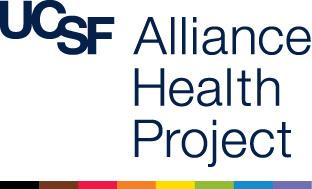

Lucy Ogbu- Nwobodo, MD- the lead psychiatrist at AHP and an AACP Early Career board member is leading the collaboration on using the SMART tool to support AHP's anti-racism efforts.
AHP is hosting the AACP Membership Meeting and Reception on Sunday May 21st starting at 5pm at 1930 Market Street San Francisco, CA 94102

A publication of the American Association for
Community Psychiatry
www.communitypsychiatry.org
mmunity Psychiatrist
Spring 2023
Anthony Carino, MD Director of Psychiatry, Janian Medical Care

Volume 39, Number 1
AACP Certification Exam
Fellows and Community Psychiatrists: AACP has increased access to Community Psychiatry Certification

The AACP Board Certification in Community and Public Psychiatry is awarded to individuals who meet the educational, experiential and exam requirements to be certified in community and public psychiatry. The AACP offers the certification and APA hosts the online exam platform.
This is a professional resource for community psychiatrists and fellows that acknowledges community psychiatry knowledge base and clinical experience. AACP encourages public or community psychiatry fellows to sit for the exam in May or June of their fellowship year. All fellowship alumni or community psychiatrists practicing for more than a year are eligible to sit for the exam.
Eligibility criteria to take the AACP Board Certification in Community and Public Psychiatry exam:
A. Completion of a psychiatry residency training program that is accredited by the ACGME. &
B. One of the two options below.
1.Completion of ten or more months of a psychiatric fellowship program in public, community, or community service psychiatry with intent to complete the program*
2.Work in a public or community psychiatry setting for at least one year.
Applicants may register to take the exam by emailing Frances Bell: francesrotonbell@gmail.com. The exam fee for AACP members is $50. For non members, the exam fee is $250
A publication of the American
Association for Community Psychiatry
Psychiatrist
Spring 2023
Sandy Steingard, MD Editor-In-Chief, Community MH Journal
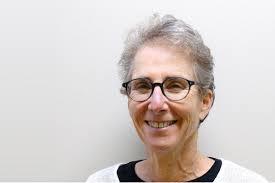
Volume 39, Number 1
The Community Mental Health Journal
It remains an honor to serve as Editor-in-Chief of AACP’s journal, Community Mental Health Journal, and I continue to feel humbled by this work. As a reminder, we publish eight issues a year and access to the journal is free with AACP membership!
We have had some changes in our leadership this past year. Robert Cotes has joined us as a Lead Editor and Sarah Vinson has moved to our Editorial Board. They have both been valuable partners in this work as are our other Lead Editors, Jessica Isom, Nev Jones, and Rebecca Miller.
Several initiatives are planned for the next couple of years. We began a series called, “Activist & Community Perspectives on Mental Health/Psychosocial Disability from the Global South”, and published our first papers in July, 2022 written by Kabale Benon Kitafuna, an activist from Uganda who wrote both an empiric paper on the history of activism in his country as well as a more personal account of his own experiences. We are hoping to get more submissions for this series in the coming year.
Later this year, we will publish a special issue edited by Amir Tal and Mark Salzer, “Impact of COVID-19 on the Lives of People with Mental Illnesses: Theory, Research and Practice.” The series will include international submissions that address the effect of the pandemic on the daily lives and activities of individuals who have autism spectrum disorders or more several forms of psychiatric disorder.

Another special issue is underway, “Recovery at 30: Emancipation, Cooptation, or the End of an Era?” The recovery movement has, in many ways, been foundational to the mission of modern community mental health but it seemed time to critically examine the concept as we approached its 30-year anniversary.
Finally, I spent a lovely afternoon talking with Angela Lui who is leading the Community Psychiatry Podcast. We discussed the journal and we hope to use this format to highlight articles in the future.
The journal remains busy. Our submissions have doubled since my tenure began in 2020. I am grateful for the interest in our journal and I am indebted to our many reviewers. Please consider joining us! Reviewers are the unsung heroes of the academic publishing world and I could not publish this journal without them. You can contact me at my email if you are interested in learning more about how you can get involved.
A publication of the American Association for Community Psychiatry
mmunity
www.communitypsychiatry.org
Psychiatrist
Spring 2023
Jonathan Stone (he/him) OUWB School of Medicine, Class of 2024 Wisconsin Alzheimer's Institute (WAI)

Volume 39, Number 1
A Personal Journey: Confronting the Interplay of Guns and Mental Health in Rural America
As a medical student, I've borne witness to the complexities of mental health and the harrowing impact of gun violence. However, my understanding of this issue is deeply rooted in my own upbringing and experiences in rural Wisconsin—a place where guns were a ubiquitous presence, and mental health care was distressingly scarce. Growing up, guns were an integral part of my life. I received my first gun at the age of 12, and by the time I was 16, I had bought and sold over ten firearms using a private sale website, and fired thousands of rounds of ammunition.
I recall a Military Gun Show, where a friend and I at the age of 14 were offered a private sale for an old Russian World War II sniper rifle for just $80, with an ammo can of 440 rounds for around $50. Access to guns was effortless, but the same couldn't be said for mental health services. My undiagnosed mental health concerns cast a shadow over my life, yet therapists and psychiatrists were few and far between.

The culture of guns in rural Wisconsin extended beyond hobby and sport—it was a way of life. Hunting trips with family and friends, target shooting on the weekends, and gun safety lessons were all part of my upbringing. It was a world where firearms were normalized, yet discussions about mental well-being were virtually absent.
Fast forward to my time working as an EMT for a fire department in rural Wisconsin. Here, I faced the harsh realities of a struggling community—administering naloxone to individuals seeking solace in drugs as family farms crumbled under economic pressures. My colleagues, the heroes who served their community selflessly, kept the traumas of challenging EMS calls to themselves. Yet, in the break room, they'd proudly discuss their newly built AR-15 rifles. It was a poignant reflection of the culture in the Midwest, where guns were a source of pride and identity, while mental health struggles remained hidden behind closed doors.
A publication of the American Association for Community Psychiatry
mmunity
www.communitypsychiatry.org
Spring 2023
Volume 39, Number 1
A Personal Journey: Confronting the Interplay of Guns and Mental Health in Rural America- Continued
My experiences in medicine brought the tragic consequences of gun violence into sharp focus. During my surgery rotation, while on-call in the Surgical Intensive Care Unit (SICU), I received a page to respond to a trauma. In the chaos of the emergency room, I found a patient with a gunshot wound to her chest. The story unraveled as an officer explained that the woman's husband had shot her, their daughter, and then turned the gun on himself. He lay in the trauma bay next to her, a haunting sight.
While the patient survived the ordeal, the emotional wounds cut deep. After her procedure, she faced a new reality: a world without her daughter, taken from her by the hands of her former lover. A fellow medical student, who later rounded on her during Internal Medicine, described her palpable grief.
This tragic event etched itself into my consciousness, highlighting the need for proactive measures to address mental health and prevent gun violence. While access to guns was never a barrier in my community, access to mental health care was. We must confront this disparity, particularly in rural areas where the prevalence of firearms is high.
As I reflect on my journey, I'm acutely aware of the need for potential strategies and initiatives to address mental health and gun violence. Whether it's increasing access to therapists and psychiatrists in rural areas, providing mental health training for first responders, fostering open conversations about mental well-being, establishing schoolbased programs for early intervention and emotional support, or increasing gun restrictions, each step makes a difference.
Community-based initiatives that prioritize mentorship, education, and vocational training can also provide positive alternatives and pathways to success for at-risk youth. By partnering with local leaders, law enforcement, mental health professionals, and community organizations, we can develop programs that address underlying determinants of violence, such as poverty, systemic inequalities, and lack of access to resources.

A publication of the American Association for Community Psychiatry mmunity
Psychiatrist www.communitypsychiatry.org
Spring 2023
Volume 39, Number 1
A Personal Journey: Confronting the Interplay of Guns and Mental Health in Rural America-
Continued
I believe that addressing gun violence requires tackling the underlying societal and systemic issues that contribute to it. In rural areas, where the culture of guns is deeply ingrained, solutions must be nuanced and sensitive to the values of the community. This includes advocating for responsible gun ownership and safe storage practices, as well as providing education on the intersection of mental health and firearm safety.

Moreover, I envision a future where mental health advocacy and education campaigns help break the stigma associated with seeking mental health support. Creating a culture of openness and understanding around mental health can empower individuals to reach out for help when they need it and encourage community members to look out for one another.
As a future psychiatrist, I am committed to using my experiences and medical training to contribute to efforts aimed at mental health care and gun violence prevention. It's a mission that begins in the corridors of hospitals, extends to the fields of rural farms, and reaches the halls of policymakers. It's a mission that calls for collaboration, compassion, and a relentless pursuit of change.
Together, we can break the cycle of violence and create a safer, more compassionate world —one where individuals are empowered to seek help without stigma, where families can heal from trauma, and where communities are equipped with the resources to thrive. It's a vision that I carry with me as I embark on the next chapter of my medical career, and one that I hope will inspire others to join me in making a difference.
As I stand at the crossroads of my journey, I am filled with a sense of purpose and resolve. I am motivated by the stories of those I have met, the resilience of communities that have faced adversity, and the unwavering belief that we have the power to shape a brighter future. For me, the path forward is clear—it is a path of advocacy, healing, and hope.
In closing, I want to extend a special encouragement to my fellow medical students, residents, and early-career psychiatrists. Your voices, experiences, and insights matter. Let us continue to learn, advocate, and strive for a better world—one where mental health is prioritized, and communities are empowered to flourish.
A publication of the American Association for Community Psychiatry mmunity
Psychiatrist www.communitypsychiatry.org
Spring 2023
www.communitypsychiatry.org

mmunity Psychiatrist
Volume 39, Number 1
A fresh view on goals of care
Christine DeCaire, MD Psychiatry Resident, Maimonides Health, Brooklyn NY

Case: MG is a 50-year-old patient with coronary artery disease, advanced heart failure, tobacco use disorder, and persistent, unremitting schizophrenia who experienced several inpatient psychiatric stays over the last decade. Dr A is a psychiatrist who has become familiar with a pattern that has repeated during that time: (1) MG stops taking whatever antipsychotic medication MG is prescribed at the time, (2) MG loses ability to perform activities of daily living, (3) MG behaves erratically, and (4) MG is transported by law enforcement personnel to the organization’s emergency department or a regional jail. MG’s networks of resources and support erode during each cycle, making recovery diminishingly likely with each inpatient admission. Dr A wonders whether a palliative approach to MG is appropriate and what that would look like.
Essay Prompt: According to which health outcomes measures should palliative psychiatric prognosis, progress, and success be defined?
"No one had locked me up against my will. I entered the hospital voluntarily. If I were going to be a mental patient, at least it would be my choice and no one else’s.”1 In her novel The Center Cannot Hold, Elyn Saks details her life-long battle with schizophrenia.1 Not unlike our patient MG, she too had multiple hospitalizations, numerous medical co-morbidities, and challenges in finding the right type of treatment.1 As healthcare discrepancies become more apparent for people with severe mental illness (SMI), there has been a surge in research and initiatives to formulate and implement a palliative psychiatry framework to ensure better care of this unique population.2
Historically, palliative care has been implemented for patients with cancer, severe heart and lung disease, chronic pain, and other illnesses with poor prognoses.3 However, psychiatric patients comprise a very high-risk population, who’s physical ailments are typically misattributed to their mental illness. Of note, they experience 3.7-times higher all-cause mortality rates and have less access to medical care overall.4
A publication of the American Association for Community Psychiatry
Spring 2023
Volume 39, Number 1
A fresh view of goals on care- Continued
In attempts to expand palliative care to psychiatric patients, Trachsel et al., proposed that palliative psychiatry “focuses on harm reduction and avoidance of burdensome psychiatric interventions with questionable impact.”2 This definition will serve as a guide to demonstrate that a palliative approach is appropriate for our patient MG. It is also important to identify health outcomes which can be used to measure the progression of a patient’s condition. Specific to MG, prominent measures include rate or number of hospital readmissions, medication adherence, quality of life, and overall mortality. In addition, it is equally as important to highlight the bioethical principles of autonomy (patients make their own informed decisions), beneficence (acting in the best interest of the patient), and non-maleficence (the duty to do no harm)5 and how they are closely integrated into the palliative model of care.
In order to assess MG’s prognosis, it is not as simple as searching mortality statistics for a certain type of cancer. While MG’s coronary artery disease (CAD), heart failure (HF), and tobacco use may have associated prognoses, these are confounded by his diagnosis of schizophrenia. Psychiatric illnesses fall on a spectrum and are influenced by many factors including a patient’s own mindset, education level, employment status, social supports, and living situation.6 This makes prognosis very dynamic and modifiable.6 Given his multiple diagnoses, his prognosis may look bleak; however, with a new palliative approach and emphasis on autonomy, beneficence, and non-maleficence, the focus shifts from prognosis to progress.
“I received a diagnosis: chronic paranoid schizophrenia. My prognosis, I was told, was listed as ‘grave.’ In short, I’d never have a life. It felt more like a death sentence than a medical diagnosis.” –E. Saks
Given that there is no universally accepted approach to palliative psychiatry, the remainder of this paper will propose a framework to be utilized by providers to care for patients, emphasizing overall improvement as opposed to remission. To begin, it would be of great utility to complete a Psychiatric Advance Directive (PAD), to establish MG’s treatment goals.

A publication of the American Association for Community Psychiatry
mmunity Psychiatrist www.communitypsychiatry.org
Spring 2023
Psychiatrist
Volume 39, Number
A fresh view of goals on care- Continued

This legal document outlines a patient’s treatment preferences in the setting of a psychiatric health crisis7, laying the groundwork for an improved therapeutic alliance between patient and provider, evidenced by improved continuity of care and treatment adherence.8 While completing this PAD, it will be important to identify a power of attorney for MG, as he previously has struggled maintaining supports in his life. Completion of a PAD will allow MG’s providers to recognize warning signs of impending destabilization, preferred medications, preference for inpatient versus outpatient care, desire for certain types of therapy, and who he would like included as part of his treatment team.7 The hope is that early intervention can begin once warning signs develop and ideally prevent inpatient hospitalizations, a measurable sign of progress for MG.
“Psychiatric patients always have someone telling them what they’re supposed to do. In my experience, I discovered that it was much more effective to be asked what I like, and how [healthcare providers] could help me get there.” –E. Saks
Once emergency care interventions are established, the focus then shifts to addressing more chronic aspects of MG’s illness and care. Identifying which psychiatric symptoms are most distressing to him and what medication side effects are intolerable are both crucial in guiding MG’s long-term care. In many patients with SMI, there is a debate of whether certain pharmacologic treatments may be deemed futile after a certain point in their care.9
While creating a medication regimen together, providers may employ non-maleficence by avoiding the iatrogenic effects associated with certain treatments that have unclear efficacy.9 Other important considerations include activities of daily living (ADLs) that MG would like to maintain, life goals and aspirations (about school, career, family life, etc.) and what quality of life means to him. Paternalistic views are prevalent in psychiatry, and what providers may deem as appropriate treatment goals may not align with the patient’s desires. This once again highlights that patient autonomy should be central to this care model. It has been shown that when patients are a part of the decision-making process, they are more likely to adhere to treatment.10 By establishing what is truly important to MG, a collaborative approach to his care will be maintained to better align with autonomy, furthering treatment success, while simultaneously avoiding further harm.
A publication of the American Association for Community Psychiatry mmunity
www.communitypsychiatry.org
1
Spring 2023
Volume 39, Number 1
A fresh view on goals of care- Continued

“I’d managed to stay out of the hospital for two years…there is no denying that my [treatment team] has been the determining factor in all of that.” –E. Saks
To address MG’s medical co-morbidities, it must first be emphasized that patients with SMI die approximately 15-25 years earlier than those without SMI.4 In the case of Elyn Saks, who suffered from headaches and memory impairments, “a completely predictable disaster happened: the ER discovered that [she] had a psychiatric history. That was the end of any further diagnostic work.”1 Regardless of a significant subarachnoid hemorrhage, Saks was judged based on her mental illness. On a larger scale, palliative psychiatry needs to include education to all healthcare providers, to provide a better interdisciplinary approach to care for those with SMI and to help reduce further stigmatization. On a smaller scale, with specific regard to MG’s medical conditions, assessing health literacy of tobacco use, CAD, and HF will aid in identifying individual goals of care for him. Although providers encourage smoking cessation or specific diets and exercise routines necessary for CAD management, this may not be an attainable goal for MG. Thus, by respecting his autonomy, a more realistic approach may include motivational interviewing, prescribing nicotine replacements, and encouraging preventative screening for lung cancer. MG will also require assistance establishing care with an appropriate cardiologist for management of CAD and HF. An emphasis on harm reduction over full remission may be more appropriate in this case. With these strategies in place, MG may have success managing his medical comorbidities and his providers will employ beneficence and non-maleficence to the degree that aligns with his goals.
“I had attainable goals, a sense of productivity and purpose, and tangible results against which I could measure my progress.”
After implementing the palliative framework listed above, health outcomes can be measured for progress and success. Regarding MG’s treatment, success may result in fewer inpatient admissions and more engagement with partial hospitalization programs. In terms of medication adherence, success may include a non-distressing chronic baseline delusion, which prevents him from reaching a dose of anti-psychotic that leaves him lethargic. It may include a monthly long-acting injectable, to reduce the pill burden of twice daily dosing. Regarding quality of life, success may look like more social engagement and participation in support groups. It may include therapy to better manage behavioral changes, resulting in less need for law enforcement.
A publication of the American Association for Community Psychiatry mmunity
www.communitypsychiatry.org
Psychiatrist
–E. Saks
Spring 2023
www.communitypsychiatry.org

mmunity Psychiatrist
Volume 39, Number 1
A fresh view on goals of care- Continued
Success may not result in complete remission of symptoms, smoking cessation, improved cardiac function, and mending of all relationships, but with emphasis on autonomy, beneficence, and non-maleficence, MG may experience an improvement in treatment satisfaction and quality of life as defined by him.
While this paper may illustrate the ideal situation and outcome, there is hope for patients diagnosed with SMI, with or without medical co-morbidities. Elyn Saks not only serves as an example of someone who found a successful treatment regimen that has prevented hospitalization for over three decades, but who has also achieved momentous life goals: graduating Yale Law School, becoming a professor of Law, Psychology, and Psychiatry, and advocating for those with SMI through her Ted Talks and legal aid involvement.11 As Saks wrote, “the humanity we all share is more important than the mental illness we may not.”1 Using autonomy, beneficence, and non-maleficence as the cornerstones of care, the ultimate goal of healthcare providers is to meet patients where they are, allow them to make informed decisions, while acting in their best interest, and to help them obtain as many successes as possible. Providers must adopt a growth mindset, bolster confidence in patients, and get creative about treatment options – the possibilities are endless.
Note: This essay was initially submitted to the AMA Journal of Ethics as part of the 2022 Conley Ethics Essay Contest.
Do you have ideas about how to connect our members? Do you want to be involved with our Instagram page, Podcast, Newsletter or membership meetings?

A monthly conversation facilitated by AACP Director of Communications Dr. Mira Bodic
Fourth Wednesday of every month 6pm EST
Meeting ID: 816 2166 5584
Passcode: 597019
A publication of the American Association for Community Psychiatry
Spring 2023
Volume 39, Number 1
"Catching" a Malingerer
Amy Gallop, MD Psychiatry Resident St Louis University
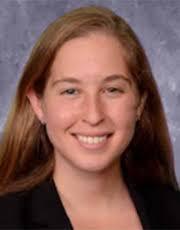
During one of my first call shifts as an intern I saw a patient who was requesting psychiatric admission. He said he was suicidal due to being homeless and that his suicidal ideations would improve if he could be admitted to the hospital. He was well known to our service and had presented ten times in the past four months with similar complaints. Following a full interview, I discussed the case with the supervising resident. His suicidal ideations were overall conditional and psychiatric admission did not seem appropriate at this time. My senior resident stated “You caught your first malingerer!” and gave me a hi-five. I smiled. I was gaining the ability to discern people who “truly needed our help” from those who were “gaming the system.” But something did not sit quite right with this new skill.
As a resident, we triage patients in the emergency department. We see first break psychosis, severe depression, delirium, substance use and homelessness. During my training, I have heard the phrase “catching a malingerer” used when a patient is seeking admission in order to gain shelter.
As I have progressed through my training, I have become aware of the flaws in our mental health system, lack of resources for the unhoused and systemic inequities that continue to be perpetuated. The more patients I saw searching for shelter and food, the more I realized our anger and judgement is misplaced. As a resident who supervises call, I do not take pleasure in “catching malingerers.” When I evaluate a person who continues to seek help through the hospital for housing, food and respite, I feel upset at our system.
Why is it more appealing and accessible to be admitted into a psychiatric hospital than a homeless shelter? These people seeking shelter have no other support system or interpersonal connections because if they did, they would be using them instead of presenting to our emergency departments. Our system is flawed. Perpetuating a culture of “catching malingerers” is not going to fix this system and will not make us better physicians.

A publication of the American Association for Community Psychiatry mmunity
Psychiatrist www.communitypsychiatry.org
Spring 2023

Psychiatrist

Volume 39, Number 1
When writing our personal statements to get into medical school and residency, most of us cite connection with others and a desire to help on an individual and community basis as the reason we are drawn to this field. Approaching these patients, whose needs are more social in nature, with this desire to connect and help would better align with our goals of becoming physicians. People who are unhoused, unemployed and Black are more likely to be labeled as "malingering" than other populations, and people previously given this label are more likely to be discharged from a hospital on subsequent presentation (Park et al., 2021). The most common reason for "malingering" is often unmet clinical needs. Changing our terminology and directing our anger towards the system as opposed to the patient may help shift the culture in medicine. Trainees approaching our broken system with compassion, empathy and humility are going to be better equipped to provide accessible, appropriate care for our patients. We will be more passionate about lobbying for funding for housing resources, substance use treatment and comprehensive outpatient support and quicker to engage with the communities we serve to understand the unique struggles they encounter. Inpatient psychiatric hospitalization may not be indicated for someone whose main concern is lack of housing. When I hear people using denigrating or insensitive language, I speak up and try to rephrase what they are saying in hopes that it will help combat this culture of “catching malingerers.”
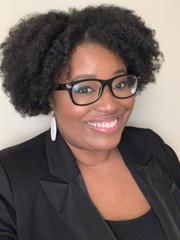



A publication of the American Association for Community Psychiatry
mmunity
www.communitypsychiatry.org
Jessica
Rob
Zoe
communitypsychiatrypodcast@gmail.com
"Catching" a malingerer- Continued
Angela Liu- PGY1 at Zucker Hillside, Founder
Isom- ECP, Yale University, Co-Host
Gadomski- ECP, Project Renewal NY, Co-Host
Wyse- MS1, Creighton University, Editor
Spring 2023
Volume 39, Number 1
Innovative Community Program for Children with Autism Spectrum Disorder
 Kelly (Chase) Greeson, MD, MPH (she/her/hers )
Kelly (Chase) Greeson, MD, MPH (she/her/hers )
 Psychiatry Resident, Medical University of South Carolina
Psychiatry Resident, Medical University of South Carolina
The increasing prevalence of Autism Spectrum Disorder (ASD) calls attention to the urgent need for effective treatments. According to the Centers for Disease Control and Prevention, the prevalence of ASD in the United States in 2010 was 1 in 68 children, while in 2020 it rose to 1 in 36 children (CDC, 2023) To date, there are no curative pharmacotherapy options for ASD and medical treatment has focused on targeting symptom management and incorporating behavioral therapy techniques.
The goal of behavioral therapy treatment is to identify what occurs before and after a certain behavior and employ techniques such as applied behavior analysis (ABA) and discrete trial training to modify the specific behavior. Given the rising prevalence of ASD, barriers to access to care, and increased financial burdens, we as a field must consider innovative community-based models that are high quality and cost friendly. High quality cost effectiveness analysis of early intensive behavioral intervention (EIBI) is still relatively lacking; several studies have nonetheless shown that EIBI is a cost effective treatment (Sampaio et al., 2021) This report presents one such program, the Meredith Autism Program (MAP) at Meredith College in Raleigh, North Carolina. Programs like the MAP are critically needed as our current system of care demonstrates socioeconomic disparities. Children who are members of minority groups receive diagnoses and access to interventions and treatment less often and at an older age. For example, non-Hispanic Black children (0.67 absolute odds ratio (AOR); 95% CI, 0.54-0.84) and Hispanic children (0.77 AOR; 95% CI, 0.63-0.93) have lower odds of participating in EIBI, when compared to non-Hispanic White children (Shenouda et al., 2022) In addition, children living in affluent areas have been shown to have a greater odds of participation in EIBI programs. These socioeconomic status disparities manifest the importance of ensuring programs are working to improve care for all children regardless of race/ethnicity or financial standing.
A publication of the American Association for Community Psychiatry mmunity
Psychiatrist www.communitypsychiatry.org
Spring 2023
Psychiatrist
Volume 39, Number 1
Innovative Community Program for Children with Autism Spectrum Disorder

Continued
Access to ASD care is generally problematic. A 2016 nationwide, population-based survey found that 30% of children with ASD did not receive treatment. Of those who were treated, 43% received behavioral treatment, 7% received medication treatment, and 20% received both behavioral and medication treatment (Xu et al., 2019). Financial barriers may play a role in children not receiving treatment. Research demonstrates individuals with ASD and their families have higher educational and health care costs (Rogge & Janssen, 2019). For example, predicted annual direct medical and direct non-medical costs in the United States for individuals with ASD had reached $268 billion by 2015, and are expected to rise to $461 billion by 2025, more than four times the costs for those without ASD. (Leigh & Du, 2015) Our communities earnestly need to consider innovative models for providing high quality, cost friendly, and accessible treatment.
The MAP is a community based, EIBI program for children with ASD. One of the goals of the program is to help children with ASD develop skills to improve their activities of normal daily living through evidence-based interventions like EIBI. The MAP is a novel design that incorporates a team of staff including undergraduate students who are enrolled in a class to learn specific ABA skills. These undergraduate students then work as technicians, oneon-one, with the children enrolled in MAP to help provide the EIBI. This design helps keep costs low for the families while serving the children.
Although we lack published research on the effect of the MAP on the undergraduate students, one can imagine the powerful influence of working as a team in a community program devoted to the mission of improving the lives of underserved children. The MAP is in the process of conducting extensive research to measure the effectiveness of the program. Standardized assessments are routinely conducted by Board Certified Behavior Analysts, under the supervision of a licensed psychologist, who use a wide range of tests to assess an individual’s strengths and weaknesses, identify challenging behaviors, and develop goals. Since EIBI programs inherently collect several markers of individual improvement, it is relatively efficient to conduct descriptive, retrospective cohort studies using secondary data. Research on the experience of the undergraduates who participate could lead to useful metrics of successful participation.
A publication of the American Association for Community Psychiatry
mmunity
www.communitypsychiatry.org
Spring 2023
www.communitypsychiatry.org

mmunity Psychiatrist
Volume 39, Number 1
Innovative Community Program for Children with Autism Spectrum Disorder

Continued
In conclusion, the MAP is a unique community program deserving of further investigation as a potential replicable model in other university and academic centers across the nation. Studying the effectiveness of community programs like the MAP ensures program adequacy for the enrolled children and families. Determining effectiveness is important for acquiring program funding, restructuring and quality improvement projects, and examining the potential feasibility of duplicating the program design in similar communities. Innovative techniques, such as incorporating undergraduate students, may be worth considering as we search for solutions to the medical, social, and public health challenges of providing care for those with ASD.
Acknowledgements
I would like to recognize my mentor, Dr. Sue Tolleson-Rinehart, at the University of North Carolina School of Medicine, for her steadfast, uplifting guidance. The sincerest thank you to the families, children, and staff of the Meredith Autism Program, including Hilary Wilkinson, Crystal Lester, and Dr. Mark O’Dekirk.
For questions regarding this topic or ideas for collaboration please reach out to Kelly Chase Greeson chasegresson21@gmail.com. Complete list of references available upon request.
Part One:Introduction and Background
Part Two:The Basics: The Pillars of Community Psychiatry
Part Three: Core Competencies for Community Psychiatrists
Part Five:Creating Healthy Communities
Part Six:Supportive Services for Community Living
Part Seven: Special Populations
Part Eight: Development and Administration of Services
Part Nine:Shaping the Future
Links to purchase: Springer or Amazon)
A publication of the American Association for Community Psychiatry
Spring 2023
Volume 39, Number 1
Voting is Recovery
Nicolas K Fletcher MD, MHSA Psychiatry Resident Authority Health Consortium
APA/APAF Public PsychiatryLeadership Fellow


For much of this country’s history, the intersection of voting and mental illness has been discussed and debated in various forums in respect to how best to accommodate individuals deemed “idiots,” “lunatics,” “insane persons,” or some variation on “not having full control of one’s mind.” However, not until the passage of the Americans with Disabilities Act of 1990 (ADA), arguably the most critical piece of legislation against discrimination for persons with disabilities (including mental illness), were protections codified at the federal level in the public and private sector.
This landmark legislation was later reinforced by the Americans with Disabilities Act Amendments Act of 2008 (ADAAA) which served to explicitly broaden and make more inclusive the definition of “Disabilities” following several rulings by the US Supreme court which used a narrowed definition and thus left many Americans with disabilities, especially those with severe mental illness (SMI), without protections. The ADAAA qualified SMI and psychological impairment as substantial limitations in brain function, whether episodic or in remission, to now easily qualify as disabilities (i.e., depression, bipolar, schizophrenia...). As an aside, this makes individuals with SMI eligible for Social Security Disability (SSD) benefits and income.
Despite the intent of the ADA and similar legislation, persons with mental illness continue to experience discrimination that limits their participation in the electoral process partly because the general public and some lawmakers may hold the opinion that the diagnosis of a mental illness renders a person incompetent to vote. Coupled with the fact that states have the authority to establish who is or is not competent to vote through constitutional provisions, statutes, or regulations, means that while most individuals with SMI appreciate the significance of voting, the barriers to voting vary across state lines. In addition to competency, barriers include homelessness, registration status, lacking proper identification, history of incarceration, access to a polling location, and ballot information. As a result, individuals with mental illness experience social and political exclusion, and community psychiatrists arguably should do the practical work needed to address their disenfranchisement.
A publication of the American Association for Community Psychiatry mmunity
Psychiatrist www.communitypsychiatry.org
Spring 2023
www.communitypsychiatry.org



mmunity Psychiatrist
Volume 39, Number 1
Voting is Recovery- Continued
In this spirit, a partnership with Authority Health GME-Consortium’s psychiatry residency program in Detroit, MI and Vot-ER, a nonpartisan civic engagement organization specializing in healthcare-based tools and programs, was able to educate and train over 100 residents across multiple specialties on how to offer voter registration and education to their patients. The immediate impact resulted in over 1,400 patients being informed about their eligibility to vote, where to vote, voting procedures, and connection to additional resources to vote for the most recent mid-term elections. For many, it was their first time voting in a midterm election. This partnership can and should be replicated in all community health centers.
Aside from the laws that obligate health care centers and providers to facilitate patient’s access to the polls, public psychiatrists in community mental health centers are uniquely positioned to address several barriers to voting for individuals with mental illness. From initial psychiatric evaluations to follow-up visits and strengthening of the patientphysician relationship, there is ample opportunity for education and facilitating the voting process. Moreover, voting allows individuals with SMI to take actionable steps for engagement in one of the critical freedoms of citizenship. As more national attention is paid to mental illness following COVID-19, individuals with SMI should be empowered to use their lived experience to vote for or against policies concerning the mental health system for which they have first-hand knowledge.
A publication of the American Association for Community Psychiatry
Meet the AACP Instagram
and Follow us @aacp_communitypsych
Team
Hannah Lynch is a 4th year MS at the New York Institute of Technology
Jean Wu is a 4th year MS at the Virginia Commonwealth University
Spring 2023
Psychiatrist
Volume 39, Number 1
An experience from the Pediatric Inpatient Psychotherapy Squad
Samantha Hayes, MD (they/them)
 Psychiatry Resident, Maimonides Health, Brooklyn NY
Psychiatry Resident, Maimonides Health, Brooklyn NY

In 2016, the average hospital cost for pediatric stays unrelated to birth was $13,400, more than half of which is covered by Medicaid (Moore 2019). One innovative way to reduce costs and length of stays for these patients is through psychological interventions (Bujoreanu 2015). In addition, preliminary research shows that children may develop post-traumatic stress disorder symptoms secondary to their medical trauma (Marsac 2014) and have a high chance of meeting criteria or carrying a diagnosis of another psychiatric condition unrelated to medical trauma (Doupnik 2017).
As recognition grows regarding the benefit of psychological and psychiatric care for children on medical units, so must services provided by these hospitals. At Maimonides Health- a community mental health center in Brooklyn, NY, a psychiatric resident-driven group known as the Pediatric Inpatient Psychotherapy Squad (PIPS) was developed to meet this need. PIPS is an elective rotation for residents interested in child and adolescent psychiatry, which offers the opportunity to engage patients noted by the pediatric inpatient team and approved by the child psychiatry consult-liaison team as appropriate and willing to take part in therapy. Residents visit these patients 2-3 times a week, usually after regular clinic hours, to help them cope with medical diagnoses, the hospital stay and other psychological needs identified. The residents are receiving supervision from a trained child psychologist as well as other resources.
As a second year psychiatry resident, the PIPS service was my first opportunity to develop a therapy-driven relationship with a child and was invaluable in shaping skills I will continue to hone for the rest of my career.
The below reflection highlights one child whose lived experience and therapeutic relationship educated me on the power of holding space, and shows the value of providing psychological support to those dealing with acute medical trauma (all potentially identifiable details have been changed to protect their privacy).
A publication of the American Association for Community Psychiatry
mmunity
www.communitypsychiatry.org
Spring 2023
Volume 39, Number 1
An experience from the Pediatric Inpatient Psychotherapy Squad

Continued
My first therapy patient was a teenager with intellectual disability who had a hematoma leading to right sided hemiplegia. He was thereafter diagnosed with acute lymphoblastic leukemia. By the time I became involved in his care through PIPS, he had been in the hospital 26 days, only half the length of what eventually amounted to a two month stay. I was available to take him on as a therapy case for the remainder of his stay and was unsure what to expect.
When I first evaluated him as part of the pediatric consult-liaison team, he presented with sunny spirits. He was going to be a doctor, a lawyer, or a garbage man. He was going to learn to walk again, help with chores, and help with his younger siblings. His resilience astounded me as I learned further details about his admission. I contacted his father to confirm that his son was allowed to participate in our program. He explained that he could only come visit at night as he worked all day to cover the bills for his family. His mother barely visited as she couldn't stand to see him in this state and had her own problems; ACS was involved somehow.
Shortly after I met him and his contagious optimism, he went into acute liver failure and needed a transfer. When he returned, he needed a PEG tube due to poor oral intake. I continued my services in earnest, wanting to provide another support to this child undergoing quite difficult times. Through this process, I watched him become jaundiced and thinner. He developed a barren, blank stare focusing on the television and iPad that occupied his time. Sometimes he watched classic cartoons, smiling weakly at the antics on the television. At other times he watched news clips on his iPad, on one occasion saying, “How sad, that person died.” This statement struck me especially hard as I watched this child’s health continue to decline. Perhaps these videos were the only way he could process the grim reality of his diagnosis. In between his media moments, I often looked to engage him in therapeutic techniques to see if I could draw out and share whatever burden he was hiding.
One day, he asked for Lego. As we began the first few steps, he became disheartened by his inability to use both hands to build, as he could not firmly put together two pieces without my help. “Maybe another time,” he told me, the reason he stopped remained clear yet unspoken.
A publication of the American Association for Community Psychiatry mmunity Psychiatrist www.communitypsychiatry.org
Spring 2023
Volume 39, Number 1
An experience from the Pediatric Inpatient Psychotherapy Squad Continued

I offered him the chance to write his stressors down and physically rip the paper apart. I explained that if he wanted, I could write for him and we could work together to destroy everything that made him upset. "What good would that do?" he asked. I had no answer to appease him. I offered him a game of Uno once; he played one round in an attempt to appease me, his cards resting on his chest as he couldn’t hold the cards up. After that round he stated he was tired and requested to be left in peace, terminating our session earlier than expected. Sometimes, other doctors would check in on him during our sessions, peeking through the curtains., He'd say they were visiting the patient in the other bed and not him. I knew they were assessing how much he was eating and waiting for a parent to arrive to discuss next steps.
I felt defeated after three weeks of visiting a few times a week. I was watching a child face an immense task and seemed to be unable to give him aid or relief from these pressures. “How can I help?” I asked my mentors. Our group included the child psychologist who I met with regularly, our child psychiatrists, who were always accessible, and the child life specialists who saw him daily growing weaker, and his medical team. All parties had suggestions, but there was no easy answer to help this boy. What I eventually discovered, as I persisted with my visits, was that he valued the quiet times – the only time she would occasionally express his inner thoughts. Our sessions often began with blank stares at a screen before he eventually looked at me, saying how much he missed his life. He wanted to finally leave the hospital, to go out and learn to walk again, to see his siblings again. He granted me glimpses of his pain for just a few moments before turning his attention back to the lifeless screen. Near the end of his admission, he said, “Thank you.” He told me he was glad I came to see him. Then he went back to his iPad, eyes glazing over as I realized that all he wanted was to be heard and acknowledged, that sometimes for all the dedication that could be poured into offering suggestions and techniques and coping skills, all he needed was the empty space in which to pour and process and speak without fear or judgment.
As I enter my child and adolescent psychiatry fellowship this July, I know that this experience will carry forward in my work. Holding space for him proved helpful for him and invaluable in my own education as an ability I hope will serve other youth with their battles. I want them to speak, scream, whisper, cry, or remain silent if that is what they need. As much as psychiatry is known for using words, the moments without them may be just as, if not more, potent and powerful.
A publication of the American Association for Community Psychiatry mmunity
www.communitypsychiatry.org
Psychiatrist
Spring 2023
Volume 39, Number 1
A very small suggestion for a very big problem
Michael Flaum, MD
AACP Immediate Past President Professor of Psychiatry, University of Iowa


The backlash aimed at reversing any progress made over the past few years in recognizing and dismantling structural racism in this country is in full swing. It is well funded, highly strategic, and not limited to a few outlier states or regions. Where I live, it began with legislation in early 2021 that banned the teaching of “CRT” in public schools.Just last month, the Board of Regents declared an immediate halt of all new “DEI” initiatives and a review of all ongoing “DEI”related activities across the state universities. News stories about both included pictures of happy-looking Iowans holding up “NO-CRT” and “NO-DEI” signs during the respective announcement ceremonies.
I couldn’t help wondering how many of the people holding those signs even knew what the acronyms stood for, much less their underlying meaning. What seemed very clear was that they were against something, and pleased that action was being taken.
I’ve been working with rural Iowans for many years now, in counties than voted by 90-10 margins for those that are championing these kinds of actions. I’ve never talked to any of them about how they feel about critical race theory or diversity, equity, and inclusion, but I do know something about what they are against, what they care about, and how they get their information.They are against the downward trajectory they see in their overall quality of life and that of their families.Their communities aren’t thriving, their schools are not what they once were, many have sold their family farms to big agriculture and their children and grandchildren are scattered, and often struggling with diseases of despair. They can’t keep up with their medical bills, etc., etc. I also know something about the news and social media most of them listen to or read, and what they are being told day in and day out:That the reason for their woes last year was at least partly caused by this thing called “CRT”, and when banning that didn’t make anything better, today it is because of this thing called “DEI” or “wokeness” (whatever that means).
A publication of the American Association for Community Psychiatry mmunity
Psychiatrist www.communitypsychiatry.org
Spring 2023
Volume 39, Number 1
A very small solution for a very big problem- Continued

I know many of these people quite well, and my sense is that most of them genuinely embody the values of equity and inclusion. (It’s harder to speculate about their feelings about diversity, as many have limited experience with diversity in their communities.) Yet, most of them, when asked what they think about “DEI” initiatives would probably tell you they are strongly opposed and glad that those in charge are putting an end to all this nonsense.

This brings me to my small and probably unrealistic suggestion: Perhaps we should actively avoid using acronyms like “DEI”. When we are talking about equity, diversity, and inclusion, can we get in the habit of actually using those words? It may seem impractical, especially for those who work directly with these issues and need to use these terms dozens of times each day.But might there be value in modeling the time it takes to say them fully on each occasion? And if someone is talking or writing about their opposition to equity, or to diversity, or to inclusion, wouldn’t we better positioned to ask and expect them to use those words when referring to their reasons for taking that stance, if those of us promoting those values use them ourselves?

We live in Orwellian times, when words are routinely transformed to obfuscate their meaning.One small recourse is to speak slowly and precisely.
To learn more and schedule office hours click here


A publication of the American Association for Community Psychiatry
mmunity Psychiatrist www.communitypsychiatry.org
Rachel Talley- Univ. of Pennsylvania, Public Psychiatry Fellowship Director Sosunmolu Shoyinka- CMO, Philadelphia Dept. of Behavioral Health Kenneth Minkoff- ZiaPartners Consulting
Spring 2023
www.communitypsychiatry.org
mmunity Psychiatrist
Volume 39, Number 1
Editor's Closing Comments
My partner and I have recently started to talk about financial planning for retirement and one of the first hurdles we had to face was "when do you want to retire?" He is a consultant for a large company and while he enjoys the projects and people he works with, he sees this as his job rather than his calling, and appreciates when Friday comes around. He imagines working hard now so he can retire at 50!
Mira Bodic, MD
 AACP Director of Communications Newsletter Editor
AACP Director of Communications Newsletter Editor

I, on the other hand, have several part time paid and unpaid jobs, and love what I do, so not only do I occasionally attend "work" meetings and events in the evenings and on Saturdays, I see this as my life passion rather than my job.
I cannot imagine retiring (unless of course my brain goes haywire :)- in which case I really hope someone would tell me to stop if I lose awareness!)
What excites me in my work is the ability to challenge the norms of a limiting and often inadequate mental health system for the benefit of the people I treat, and to model this behavior for young minds in the process.
When I think of a relatable way to explain this, I keep landing on something like the game of tetris- many blocks of various shapes and sizes get dumped on you and you need to pick them up while still in the air, flip them to the most useful position and deposit them on your foundation. And they rarely match easily! However, after playing for a while you learn to anticipate patterns and, with enough skill and patience, line them up just so! And there you go: a line disappears and you get yourself some room to breathe!
The tetris game is a very good metaphor, in my opinion, for the work of a community psychiatrist. So let's play, work, help some folks along the way and write about it for the world to know!
Thank you to everyone who submitted to the AACP Newsletter, to everyone who reads it, and to everyone who contributes to the Community for Community Psychiatry!
A publication of the American Association for Community Psychiatry
WE PROTECT PSYCHIATRISTS A POLICY WITH PRMS® COVERS YOU FOR THE TYPE OF PSYCHIATRY YOU PRACTICE Professional liability protection is just one part of our comprehensive insurance program. When it’s time to select your insurance provider, choose the program that puts psychiatrists first! FORENSIC PART-TIME CHILD & ADOLESCENT MOONLIGHTING RESIDENTS & FELLOWS MILITARY TELEPSYCHIATRY ADDICTION GERIATRIC 8002453333 PRMScom/Dedicated TheProgram@prmscom More than an insurance policy Insurance coverage provided by Fair Amer can Insurance and Reinsurance Company (FAIRCO) New York NY (NAIC 35157) FAIRCO is an authorized carrier in California ID number 3715-7 www fairco com PRMS, The Psychiatrists’ Program and the PRMS Owl are registered Trademarks of Transatlantic Holdings, Inc , a parent company of FAIRCO
























 Psychiatry Resident, Medical University of South Carolina
Psychiatry Resident, Medical University of South Carolina




 Psychiatry Resident, Maimonides Health, Brooklyn NY
Psychiatry Resident, Maimonides Health, Brooklyn NY





 AACP Director of Communications Newsletter Editor
AACP Director of Communications Newsletter Editor
